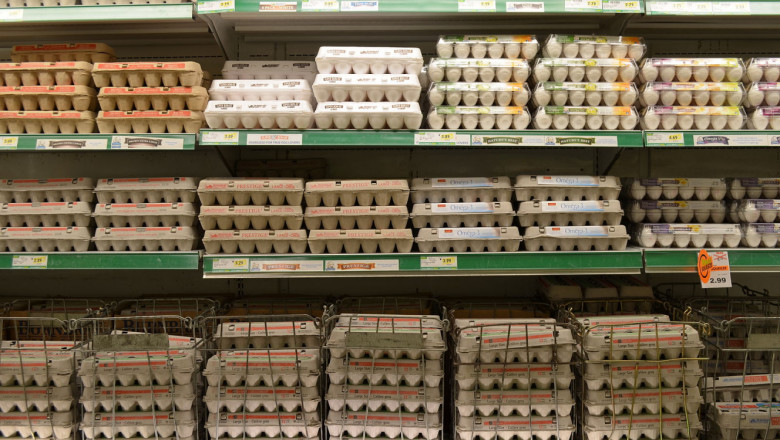
In some places, eggs have doubled in price in the past year. (Raysonho/CC0 1.0 Universal Public Domain Dedication)

In some places, eggs have doubled in price in the past year. (Raysonho/CC0 1.0 Universal Public Domain Dedication)
Have you noticed the rising prices of food items this year? A trip to the grocery store has recently become much more expensive. Family favorites, necessities, and satisfying snacks burden our debit cards and threaten our budgets. Inflation is burgeoning, and the price of many staple food items are expanding, yet the quality and quantity are not reflected (nor are stagnant wages considered) in the price changes.
Let us take eggs, for instance. Eggs go in everything. They are a foundational item that is used to bind things together. They can be scrambled, flipped, fried, deviled, and so much more. The best thing about eggs was that they are — well, were — dirt cheap. In early 2022 a dozen eggs cost around $2 on average. Now, eggs are running closer to $4 a dozen for conventional eggs, and it is putting a damper on the typical grocery tab.
As a college student, I have a part-time job to sustain myself. I have been employed by Walmart for three years, so I have noticed these trends concerning the price of eggs. As an online grocery pickup associate, I shop for customers who typically include eggs on their grocery lists. Some people purchase organic eggs, while others buy the store brand, but no matter what type of egg is chosen, I noticed they’ve become awfully expensive for such a staple grocery item. This sudden price change intrigued me, so I decided to find the underlying cause.
The economic research service of the U.S. Department of Agriculture highlights this surge in egg prices in their updated Food Consumer price index. Although many factors may impact egg prices, researchers and reporters alike have found that bird flu is one of the main culprits of egg inflation. Bird flu refers to an illness in birds caused by infection with avian influenza Type A viruses. According to the Centers for Disease Control and Prevention (CDC), domesticated birds (chickens, turkeys, ducks, etc.) may become infected with avian influenza A viruses through direct contact with infected waterfowl or other infected poultry, or through contact with surfaces that have been contaminated with viruses.

During this research journey, I interviewed Alexis Smith, a graduating senior of Tuskegee University’s Animal Science program. Smith is highly interested in poultry and holds an executive position in Tuskegee’s Pre-Vet club. Smith explained that there are two types of bird flu, low pathogenic and high pathogenic. Low pathogenic avian influenza can cause no sign of disease and if it does, it is mild. However, with mild symptoms, there will still be a decrease in egg production and the virus can still mutate into the highly pathogenic type. Whereas the high pathogenic type causes severe disease and has a 90% to 100% mortality rate. This form of the disease can affect multiple organ systems, respiratory, digestive, etc., all within 48 hours.
One of the worst repercussions of the spread of this disease is the effect on agricultural trade. When bird flu is rampant on a farm among poultry, it affects the number of chickens that produce eggs in addition to the number of eggs that pass inspection. The lack of egg production and egg contamination is hindering the amount that farmers can supply, which is why prices are rising steadily. Though fewer eggs are being produced, the demand has not weakened, which explains why the increased prices have remained and not dropped.
Research continues, but there is still no cure for bird flu in birds. Bird flu is still rampant and it is continuing to diminish the egg supply, which is causing the price of eggs to inflate.
While eggs are vital part of many people’s diets, there are several egg alternatives that people should take note of the next time they are scanning egg prices at the grocery store. According to Healthline, there are many substitutions for eggs that can be used for binding, moisture, and consumption purposes. Apple sauce, mashed banana, ground chia/flaxseed, silken tofu, as well as commercial egg replacers are all relatively easy alternatives. While it is still hard to replace the beloved egg, it is important to be cognizant that there are other options for some uses.
All in all, eggs are important, but they are increasingly a stress on people’s wallets. We often think of the economy, livestock health, and food availability as being unrelated factors that impact our lives, but in fact the epidemic of bird flu shows us that they are incredibly related with serious intertwined consequences. Whether egg-alternatives are a possible addition to your grocery list or not, more research is needed to identify effective treatments for bird flu and to ease the financial strain on those of us who depend on these animals for food and nutrition.